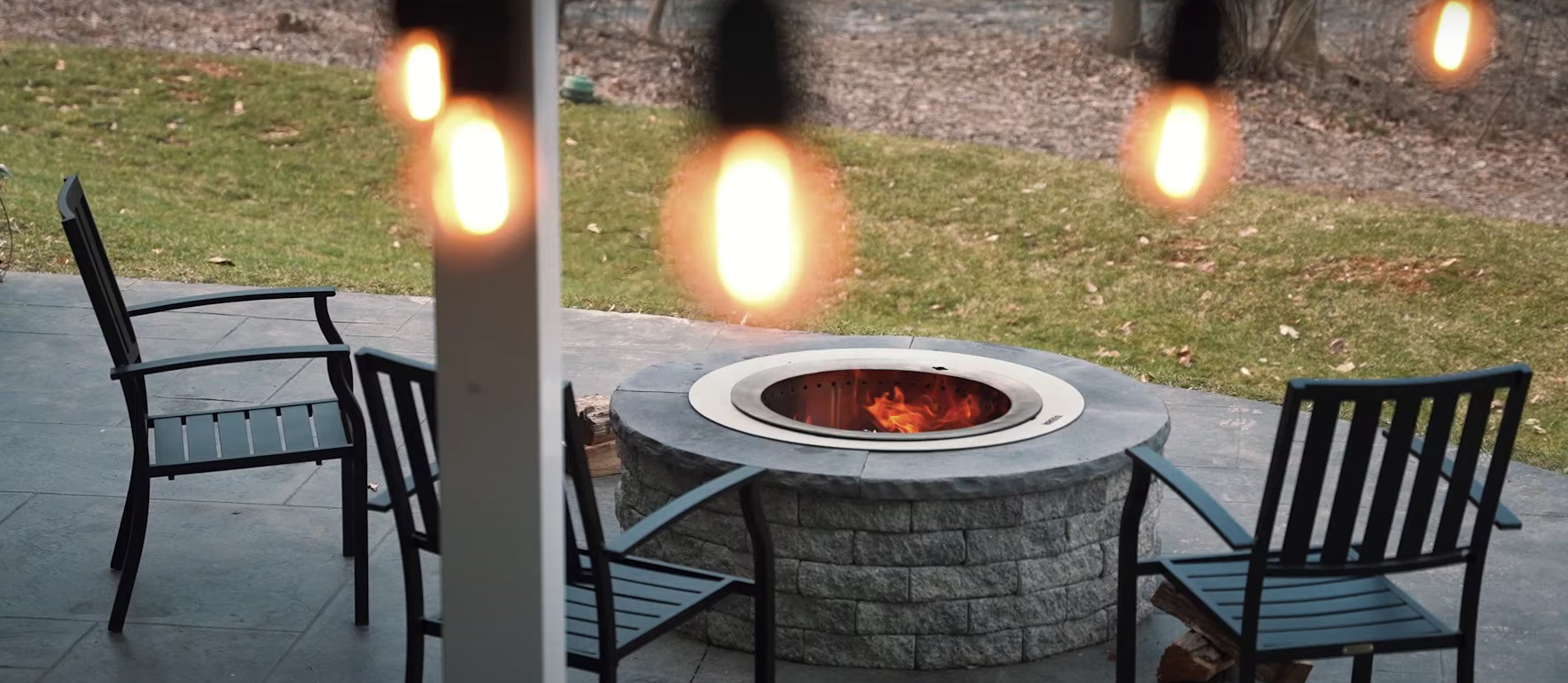A More Enjoyable Wood Fire: How Do Smokeless Fire Pits Work?
The wood fire is perhaps one of the best ways that you can enjoy the outdoors with your friends and family. With every wood fire, there comes long-lasting warmth, gorgeous light, the mesmerizing dance of flames, a wonderful aroma and crackle, and fantastic cooking capabilities. This makes a wood fire the perfect place to gather, but burning wood does sometimes offer a big drawback: smoke.
Thick smoke is a byproduct of a fire that is burning too cold, or by burning wood that’s not seasoned or dry enough. The intensity of smoke can make being around a fire uncomfortable. Thanks to the geniuses who invented smokeless fire pits, though, you can enjoy the ambience of fire without the annoyance of smoke. Here’s what you need to know about a more enjoyable wood fire: how do smokeless fire pits work?
Innovative fire pit manufacturers have developed some impressive technologies to all but completely eliminate smoke from a wood fire. This may seem somewhat impossible, but the technology doesn’t involve any bells and whistles, just some clever engineering. Two of these manufacturers, namely Breeo and Solo Stove, have come up with some fantastic examples of a smokeless fire pit. In this article, we’ll cover how both companies designed their fire pits. This includes science, technology, materials, and construction. Let’s see how your fire pit experiences can be smoke-free.
Why Do Wood Fires Produce Smoke?
Wood fires and smoke seem to always go together, so it may feel completely natural that a wood fire will always produce smoke. But, a smoky fire is not always a given. Smoke is indeed a byproduct of wood fires that can be almost completely eliminated. The science is actually very simple.
What Do Fires Need?
A smokeless fire needs two things: oxygen, and dry wood.
Fires that have a good intake of oxygen will use this flammable gas to burn faster, brighter, and hotter. The increased air flow will move too quickly for smoke to gather. The various compounds that burn from inside the wood will settle on the ground, becoming ash instead of smoke.
Fires that have lower oxygen intake will burn slower, dimmer, and cooler. The decreased air flow will let the fire burn slow enough for toxic gasses to be released into the air, which binds with steam from the wood to become smoke. The hotter the fire, the less smoke there will be.
Fires that start off with wet or unseasoned wood will also smoke heavily just because these woods won’t burn as hot as dry wood. However, if you have a mix of dry and unseasoned wood, you can still make an excellent smoke-free fire by starting off with dry wood, letting the embers really heat up, and gradually adding wetter wood a little at a time.
Or, you can just use a smokeless fire pit.
How Can You Make A Fire Hotter?
In order for a fire to burn properly, it needs to have a steady flow of oxygen. In a classic campfire that’s built using rocks, this can be done by creating a gap in the wall on the windward side for air to flow in. Fire pit manufacturers have used this general concept to create some truly ingenious designs without the help of air pumps, fans, or any other machinery. If you increase oxygen flow, a fire will always burn hotter and produce far less smoke. In turn, this will make your fireside experiences with loved ones all the more enjoyable.
Breeo Smokeless Fire Pit Technology
Breeo had its origins as a simple concept of improving basic fire pit technology. It was formed in Pennsylvania back in 2011 when the founders created the first smokeless fire pit. Soon enough, patents were obtained and Breeo started manufacturing the world’s preeminent smokeless fire pits. At the core of their smokeless fire pit concept, Breeo has developed three simple technologies: X Airflow, Double Wall Technology, and Secondary Combustion. Be sure to check out the selection of smokeless fire pits offered by Breeo. Here’s why Breeo smokeless fire pits are so efficient.
X Airflow
Breeo developed X Airflow technology in their fire pits to increase air flow from below. As air enters the fire pit from below, oxygen will feed the flames and the hot air will escape upwards. The biggest obstacle to this is the buildup of ash, which can quickly block the intake of air. X Airflow technology from Breeo is a ventilation system that’s built into the bottom of the fire pit, ensuring that the buildup of ash doesn’t prevent oxygen intake.
Double Wall Technology
Breeo developed Double Wall Technology in their fire pits to both further increase air flow from the side as well as create a heat buffer without the outer wall. As air enters the fire pit from below, it will be pulled upwards through the cavity in between the two walls. As the air rises through this cavity, it becomes superheated and moves quickly out of multiple holes in the side of the inner wall near the top. Meanwhile, the heat inside the center of the fire pit is much better contained, helping to keep the energy where it’s wanted and avoiding damaging landscape features or injuring people nearby.
Secondary Combustion
Breeo developed Secondary Combustion technology in their fire pits to directly increase heat and eliminate smoke before it rises out of the fire pit. Through the multiple holes on the top of the inner wall, the superheated air combusts and mixes with the smoke in order to completely burn out the particles in the air. The heat of the fire causes the smoke particles to fall back as ash, while hot air rises out of the fire pit and warms the surroundings effectively with zero acrid smoke to speak for.
Solo Stove Smokeless Fire Pit Technology
Solo Stove is another leader in smokeless fire pit manufacturing. They pride themselves on creating good and simple fireside experiences without the problem of smoke. Solo Stove has developed some of the most effective and affordable smokeless fire pits on the market and it all has to do with their Signature 360 Airflow Design. This system of technologies creates hot and long-lasting fires for all to enjoy. Be sure to check out the impressive line of smokeless fire pits from Solo Stove.
Signature 360 Airflow Design
At the bottom of each smokeless fire pit from Solo Stove, there is a series of holes where air is pulled into the main fire chamber for oxygen to burn. Once inside, the air flows in two different directions. Some air continues towards the center, where it enters the fire chamber from below. This air directly feeds the fire with oxygen, making sure that it burns the wood fuel hotter and faster. The remainder of the air travels upwards in the space inside the walls. There, it becomes incredibly hot and picks up speed. The air then exits at the top of the wall directly into the center of the fire pit where it combusts and burns any smoke that begins to rise. Keep in mind that all of the wood fuel must be below the rim of the fire pit in order for this process to work correctly. Soon enough, you’ll have a hot, long-lasting fire without any smoke to speak of!
Image Courtesy of Breeo



